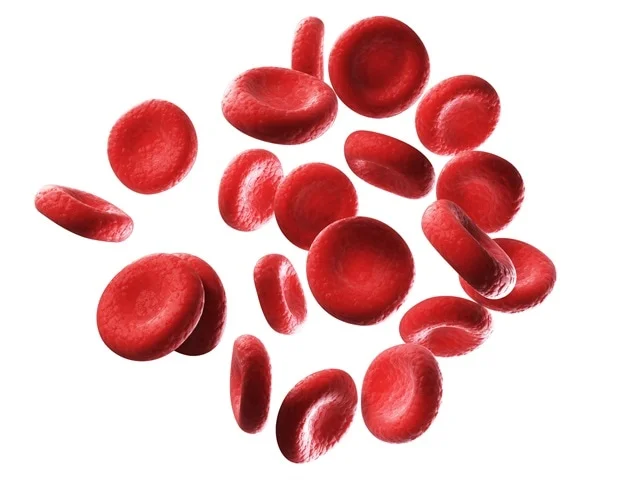Only half of pregnant women worldwide who need a treatment developed over 50 years ago to prevent Rh disease–an often-fatal condition in fetuses and newborns that is now exceedingly rare in the United States and Western Europe–actually receive it, finds a study led by researchers at Vagelos College of Physicians and Surgeons (VP&S) at Columbia University Irving Medical Center.
A previous study estimated that complications of the disease may be linked to the deaths of at least 50,000 fetuses and 114,000 newborns worldwide annually.
Results of the study were published online in PLOS One.
These findings are tragically surprising and disappointing. This is a global crisis in which hundreds of thousands of fetuses and newborns are at risk for complications and death due to Rh disease because of a lack of awareness about, access to, and availability of effective measures to prevent this disease.”
Steven L. Spitalnik, MD, professor of pathology & cell biology at VP&S and senior author of the study
Roughly half of fetuses and newborns with Rh disease die
Approximately 15% of women in the United States and 17% in Europe lack a protein on their red blood cells called the Rh factor. However, the estimated prevalence of women with the so-called Rh-negative blood type varies widely among different ethnic groups worldwide.
When such women become pregnant, red blood cells from an Rh-positive fetus can make their way into the mother’s circulation during pregnancy or at delivery. This incompatibility prompts the mother’s immune system to make antibodies and become “sensitized” to the fetus’s red blood cells. During subsequent pregnancies, the mother’s sensitized immune system is more likely to launch an attack against her fetus, leading to Rh disease.
More than half of fetuses or newborns with Rh disease die; those with severe disease who survive may have significant brain damage.
In the 1960s, physicians at VP&S developed an immunoprophylaxis therapy, Rh(D) immunoglobulin, that prevents the mother from becoming sensitized to her child’s blood cells. Since then, Rh disease almost never occurs in the United States and other high-income countries.
“This treatment is the standard of care for preventing Rh disease, but we recognize that there remain significant obstacles to expanding access to this lifesaving therapy around the world,” says Spitalnik, who has been working with an international team of physicians to increase access to therapy with Rh(D) immunoglobulin around the world.
Rh disease underrecognized, undertreated in poorer countries
The burden of Rh disease in lower-income countries is not well known; the most recent estimates are based on reported rates of neonatal complications associated with Rh incompatibility.
For the current study, the researchers measured the gap between the women presumed to need Rh immunoprophylaxis and those who actually get it. First, they estimated the annual number of pregnancies worldwide involving an Rh-negative mother and an Rh-positive fetus, based on annual reported births and the most recent prevalence estimates of the Rh-negative blood type in each region. Next, they calculated the number of doses of Rh(D) immunoglobulin needed to treat these women and compared it with the actual number of doses administered globally.
The study found an annual worldwide gap of more than 2.5 million doses below the minimum recommended threshold for preventing Rh disease.
In particular, in 100 countries, fewer than 80% of pregnant women who required the therapy received a dose after delivery.
The biggest shortfalls occur in South Asia and Sub-Saharan Africa: Both regions have a high incidence of neonatal deaths due to complications of Rh disease, but virtually no Rh(D) immunoglobulin was dispensed.
The researchers found that none of the regions studied had acceptable levels of adherence to recommended guidelines for preventing Rh disease.
“A variety of factors, including lack of awareness of Rh incompatibility, limited availability of the therapy, and other health care priorities, play a role in hindering access to this life-saving therapy around the world,” Spitalnik says. “Now that we have a better understanding of these gaps in treatment, we can begin to address them on a regional level.”
To this end, Spitalnik and Brie Stotler, MD, associate professor of pathology & cell biology at VP&S and co-author of the study, along with an international group of collaborators in obstetrics & gynecology, midwifery, pediatrics, neonatology, epidemiology, and transfusion medicine, established Worldwide Initiative Rh Disease Eradication, a nonprofit organization dedicated to improving education about Rh disease and enhancing access to blood type testing and Rh(D) immunoglobulin.
Pegoraro, V., et al. (2020) Hemolytic disease of the fetus and newborn due to Rh(D) incompatibility: A preventable disease that still produces significant morbidity and mortality in children. PLOS ONE. doi.org/10.1371/journal.pone.0235807.
